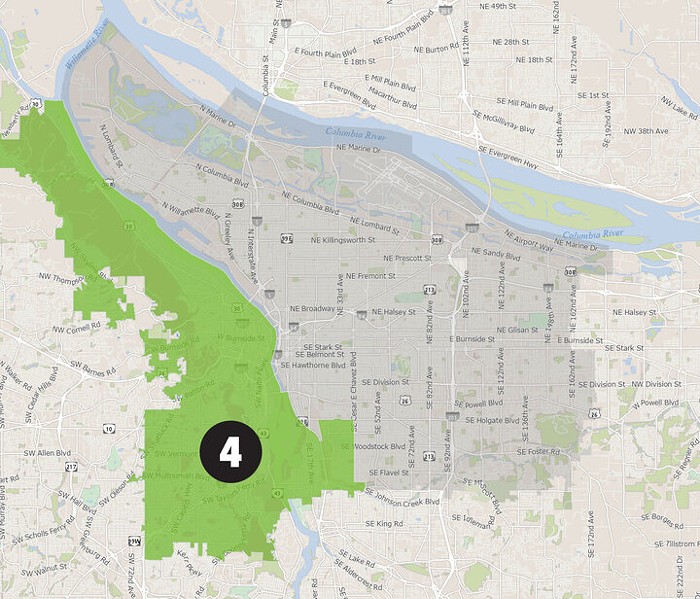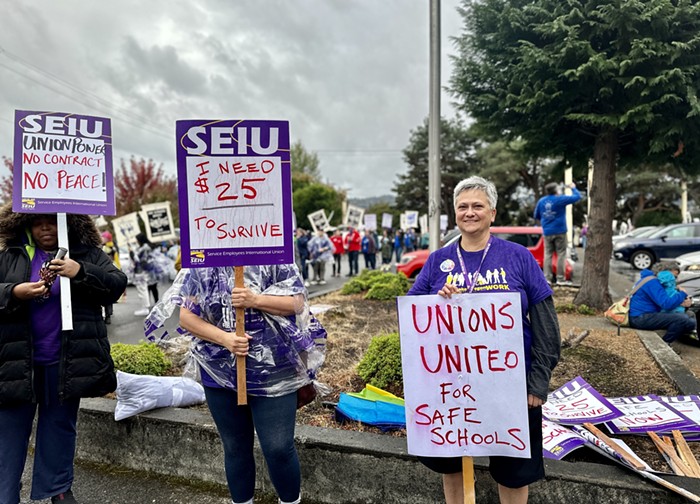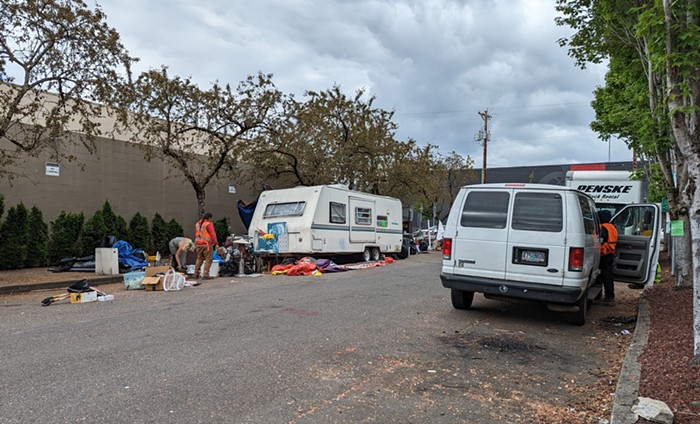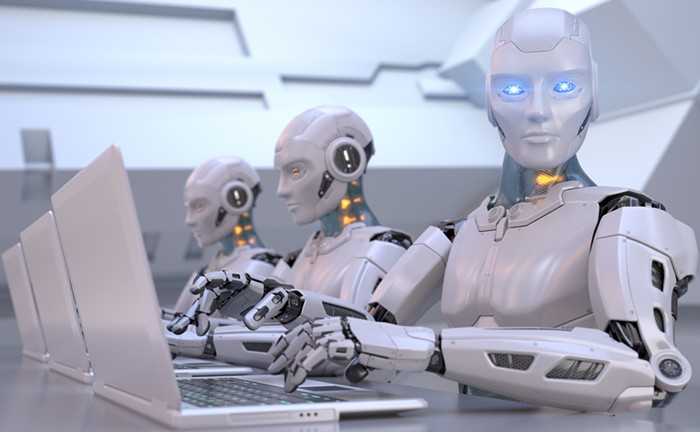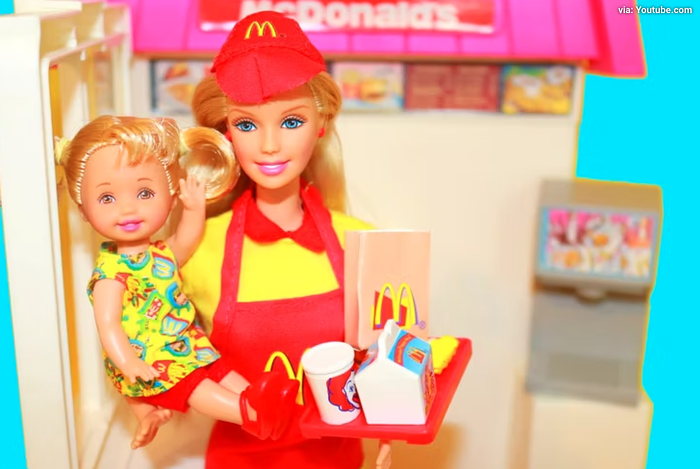
When asked whether Portland’s water is safe to drink, Portland Water Bureau (PWB) officials respond with a resounding “Yes.” However, that doesn’t mean there aren’t issues.
“Lead is a persistent problem [in Portland’s water] and it’s something that we take very seriously,” said PWB Director Gabe Solmer during a water bureau town hall Wednesday night.
“It’s going to take a long time to get the lead out of our environment,” added Yone Akagi, PWB’s water quality manager.
The town hall came three months after PWB discovered that water in a portion of Portland homes exceeded the federal lead action level—a threshold that determines whether local water bureaus have to take additional measures to reduce lead levels. The federal action level is 15 parts per billion. The federal action level isn’t determined by a health standard because there is no healthy level of lead.
In November, Portland’s regular lead testing showed the test sample had 21 parts per billion of lead, the highest levels of lead detected in Portland water since 2001. While the high levels drew comparisons to the 2014 water crisis in Flint, Michigan, Portland’s water officials rejected that comparison, emphasizing that the water testing isn’t reflective of the entire city’s water system like Flint’s case, just the homes most likely to have lead in their plumbing. In short, only some Portland homes have lead levels in their water as dangerous as Flint.
Lead is a mineral that, when used in plumbing fixtures and pipes, can be absorbed by the water. Homes that were built between 1970 and 1985 are generally more likely to have lead exposure because of the copper pipe and lead solder commonly used in plumbing at the time. Within that time frame, homes built between 1983 and 1985—defined as “tier one” homes by the US Environmental Protection Agency—are usually the worst offenders when it comes to lead levels.
Although the city of Portland does not have lead in its city pipes, there is lead present in plumbing in about 15,000 homes in Portland that were built between 1970 and 1985. Over the past five years, the water bureau estimates that 6.5 percent of those 15,000 homes have exceeded the federal action level.
Portland has been testing lead levels in tier one homes since 1997, when lead water treatment became required by federal law. Twice a year, the PWB takes a standing sample of water—water that has been sitting in the house’s plumbing for at least six hours—from at least one hundred tier one homes to determine Portland’s water lead levels. The standing water has had time to soak up lead from the plumbing, meaning that the bureau is testing the worst possible case scenario to get an idea of how effective their current water treatment is at stopping the water from soaking up the lead.
Of the homes tested last November, some had lead levels below the federal action level while others far exceeded it. One of the homes had 105 parts per billion of lead in its water, seven times the federal action level. In contrast, samples from the city’s entire water system—including tier one homes and houses of all other ages—average about 3.1 parts per billion, according to Scott Bradway, Portland’s Lead Hazard Reduction Program Manager.
“The purpose of this testing is not to see what level of lead people are being exposed to, because that varies from home to home,” Bradway said. “The purpose of the test is to find out how effective your treatment is. If you have a really effective treatment, then after six hours that treatment will keep the lead levels down. If it’s not doing that, then you need to take action to improve that treatment.”

After additional testing, the Portland Water Bureau attributed November’s lead level spike to that year’s specific array of homes tested, not its water treatment. The bureau always tests at least one hundred homes, but the homes vary as homeowners opt in and out of testing.
Regardless of the bureau’s findings, November’s spike was not a total surprise—Portland’s regular water testing of tier one homes has always been close, if not over, the federal action level. That’s why, in 2017, after Portland exceeded the action level two years in a row, the water bureau started working on building a new federally-mandated water treatment facility.
According to Bradway, Portland’s water is naturally corrosive which is what makes it more susceptible to absorbing lead in plumbing. While the water bureau already raises the pH of the water to make it less corrosive, the new facility will allow the bureau to use additional methods to stabilize the water. The facility must be operational no later than April 30, 2022.
While the water bureau believes the new treatment facility will reduce lead levels in tier one homes below the federal action level, Bradway says the bureau has no set goal for a percentage decrease or parts per billion level.
“We're really hesitant to try to give any numbers out as to what it's going to look like,” Bradway said. “We feel pretty confident that it will significantly lower those levels of lead, but we’ll be monitoring once we turn on this new treatment.”
The water bureau will measure the impact of the facility by testing 40 high-risk homes on a monthly basis once the facility starts operating. In the meantime, the water bureau is also distributing and installing free water filters to tier one homes.
The only way to fully remove lead from Portland’s water is to replace the pipes and lead soldering in older homes. According to City Commissioner Mingus Mapps, who oversees the Portland Water Bureau, the city does not have the legal authority to mandate that homeowners remove their older pipes.
During Wednesday’s town hall, Mapps said he is speaking with the city attorney’s office to see what would need to be done to give the city the authority to remove lead-based plumbing from all Portland homes. Mapps is also looking into possible funding that could financially support homeowners and landlords who want to replace their plumbing but can’t afford it.
“I want to be the last commissioner to hold a public meeting on lead in the water,” Mapps said. “I want to put this issue to bed.”
Anyone can order a free water testing kit from the Portland Water Bureau. Lead can accumulate in water that has been sitting in lead-based plumbing, so the Portland Water Bureau recommends Portlanders in high-risk homes run the facet in the morning for 30 seconds to two minutes—however long it takes for cold water to start flowing—to clear out any potentially lead-ladened water.

